Submitted by WA Contents
A new social housing project made of stack of metal boxes offers a new way of living in France
France Architecture News - Feb 27, 2017 - 12:53 23833 views
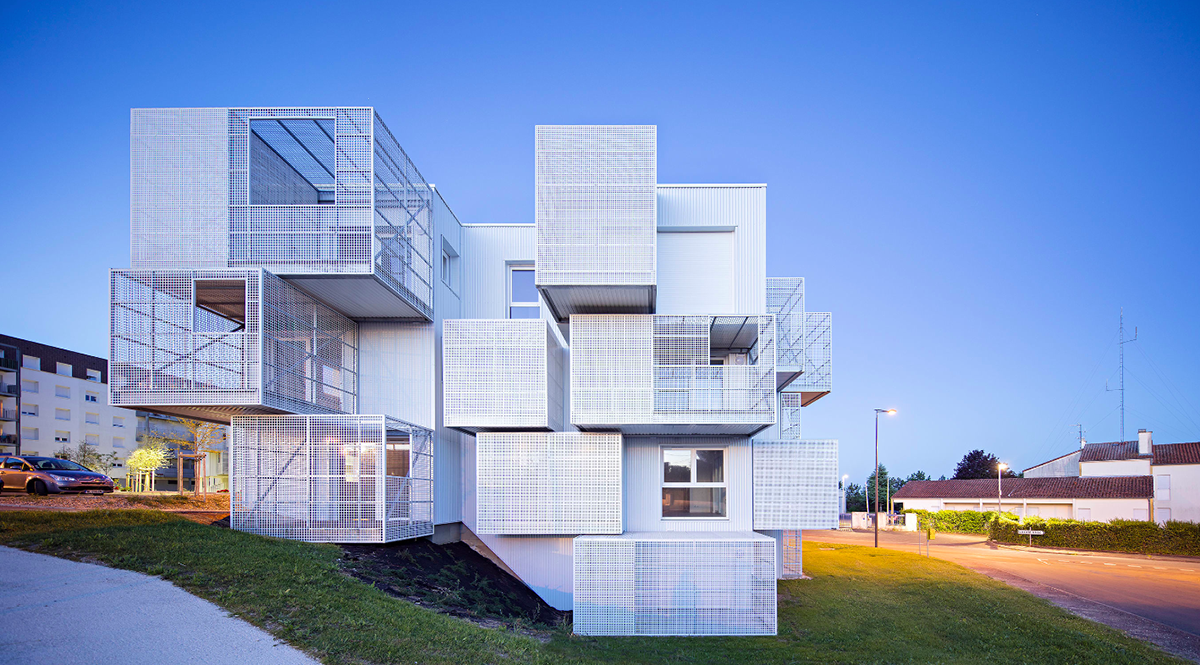
Numerous white metal boxes- some of them are transparent and some of them are coherently full of mesh- are joint together to design a new social housing project in the Saintes city of France, which seeks new alternative ways of living to invent what living together means. Designed by More Architecture and Poggi Architecture, a seemingly inhabited cloud effortlessly signals the entrance to a recently rehabilitated working-class neighbourhood, known as ''Les Boiffiers'', dating back to the 1970s.
Named White Clouds, landscape and architectural design come together in meaningful harmony, showcasing the new development.
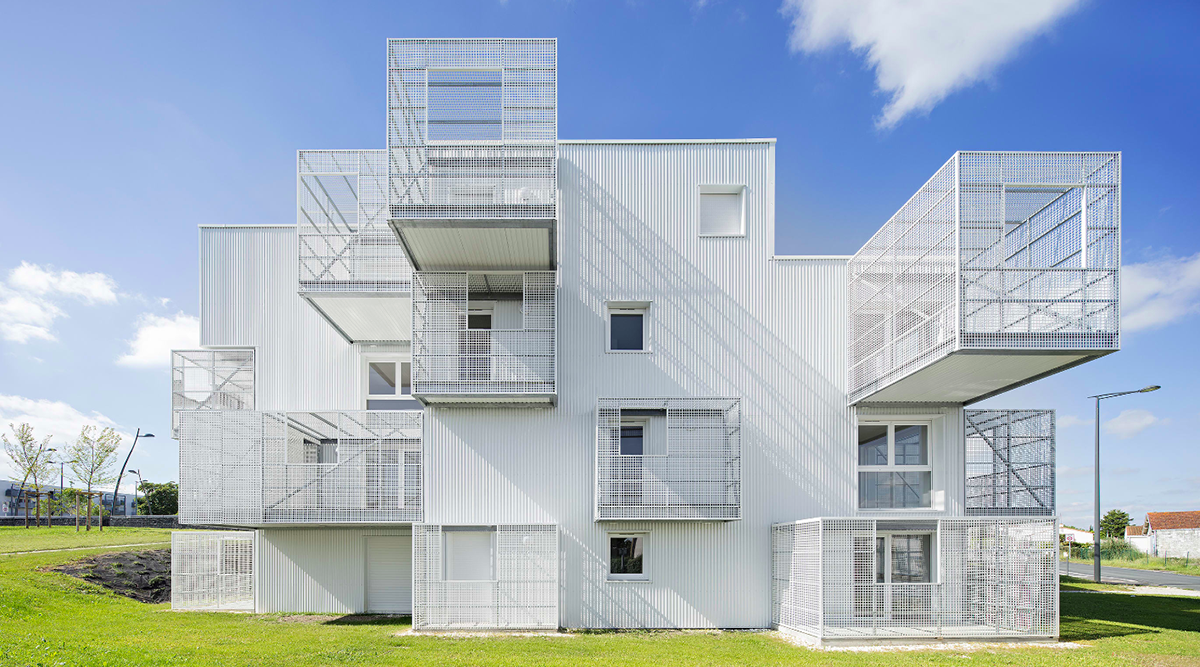
The building is positioned in such a way as to respect the site’s quality, rather than merely colonise the given space. A sense of depth has been created, structured by footpaths and enticing visual perspectives, with the landscape slipping effortlessly in and around the architectural volumes.
The project offers multiple orientations for the apartments, all of which are secluded, standing well back from the road and enjoying open vistas over the surrounding spaces.
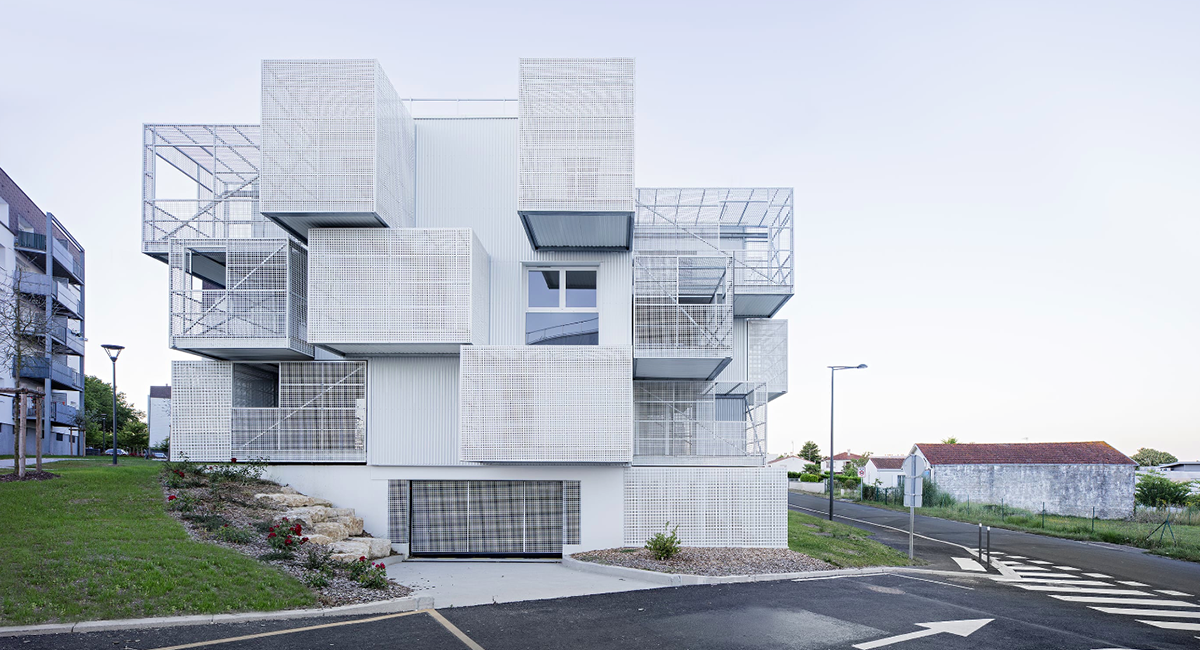
The harmonious association of setting and architecture makes way for a design which, rather than closing in on itself and looking inwards, opens out to embrace the neighbourhood as a whole, while still providing protection from direct line of sight and noise thanks to its perforated cladding.
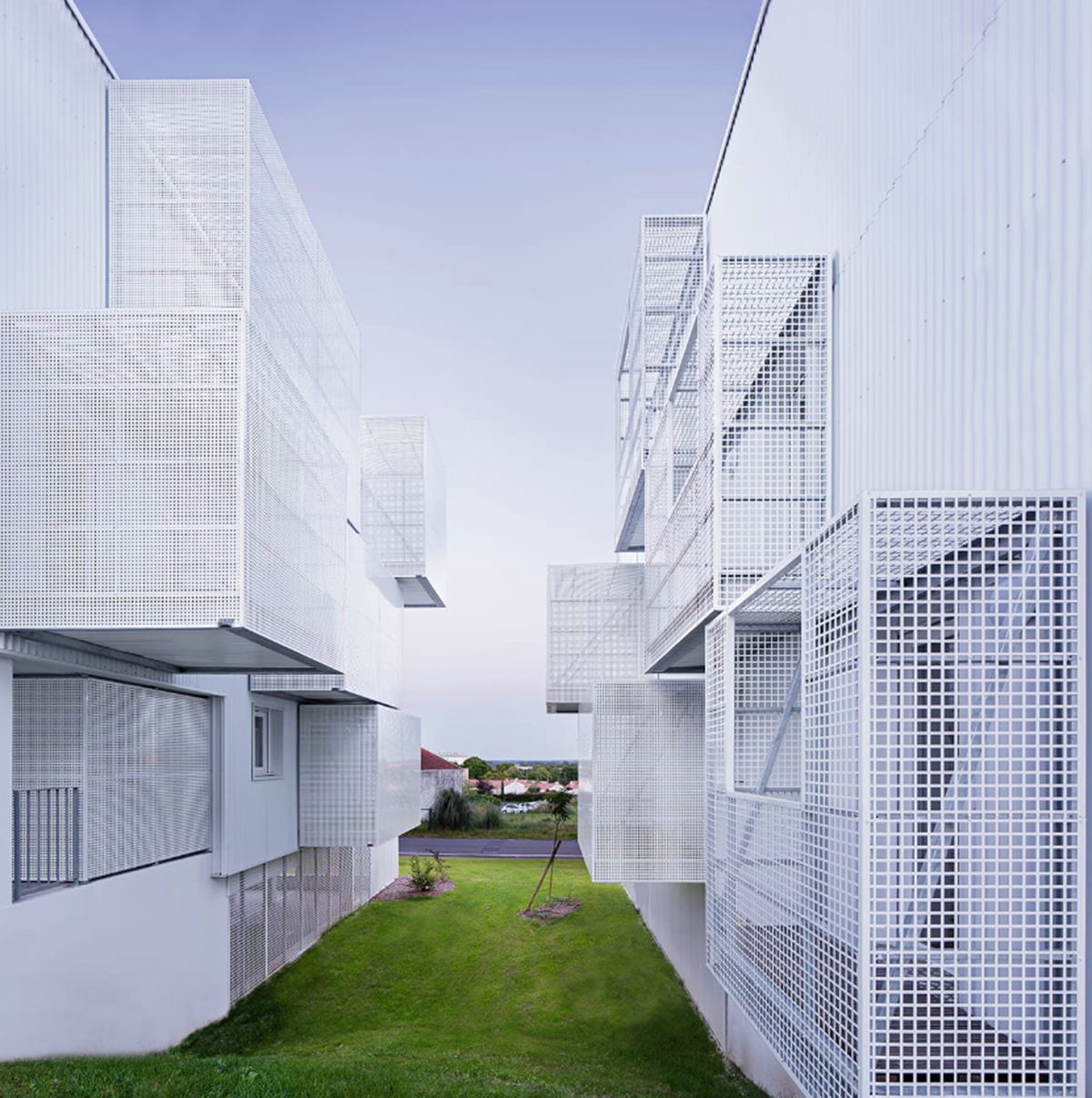
This building functions as a pivotal point and its strategic position means that the eye at once perceives it in its entirety. It has no main façade, and no front or back.
The three volumes which compose it are compact and the amply proportioned exterior private spaces are grafted onto them in accordance with their internal spatial arrangement and specific needs, playfully disturbing the line of the building’s façades.

Exit conventional balconies, terraces and loggias with their separating walls and shields of varying transparency, used to hide unsightly objects or provide a modicum of intimacy.
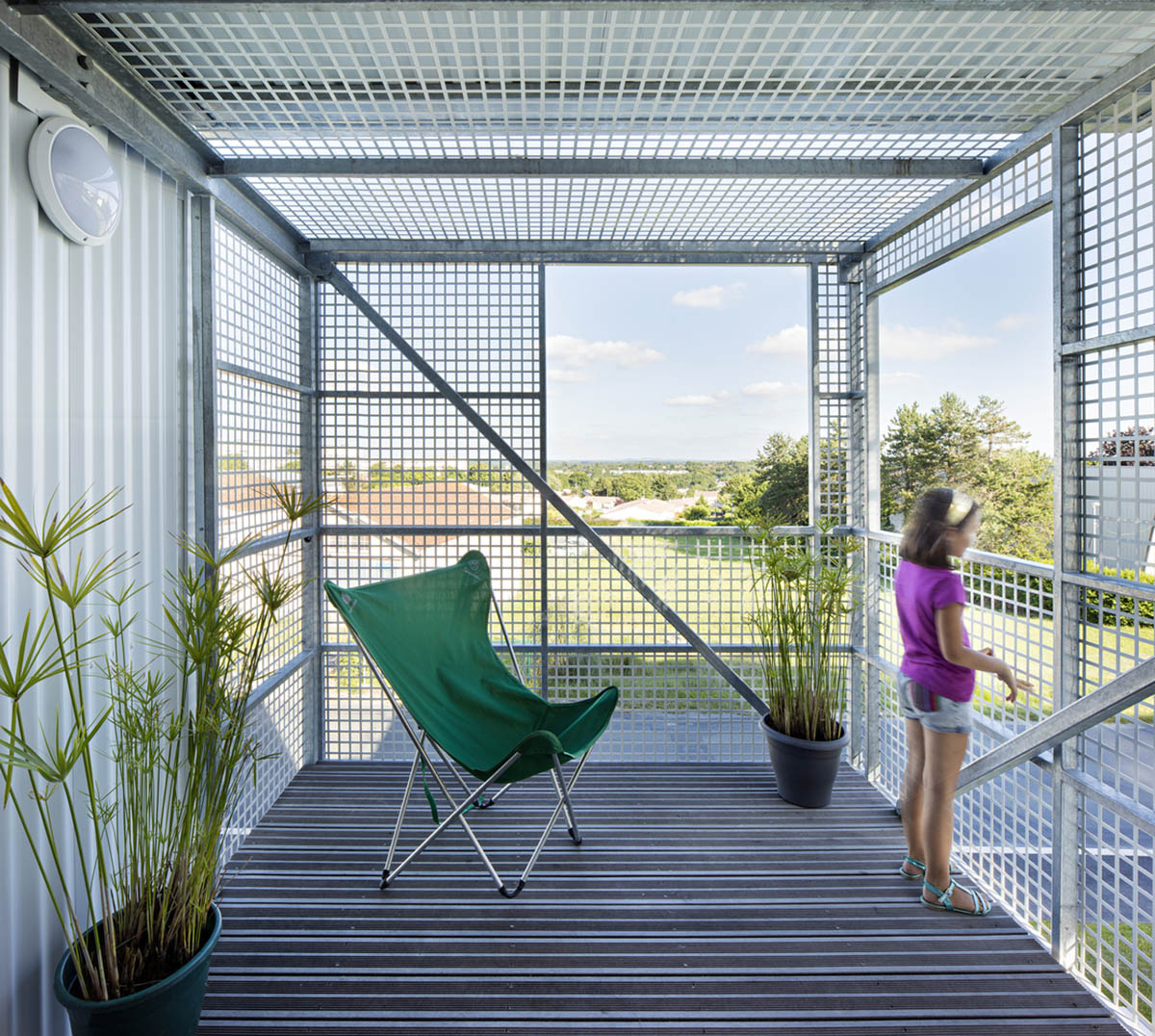
In this design, the outside spaces are extremely secluded and provide genuine additional spaces, equipped with utility rooms for drying washing or storing bulky objects, just like garden sheds. The apartments flow out into these exterior facilities, thereby offering ample extra space.
These 'additional rooms' are the design’s main distinguishing feature and endow each apartment with some of the qualities inherent to detached homes.
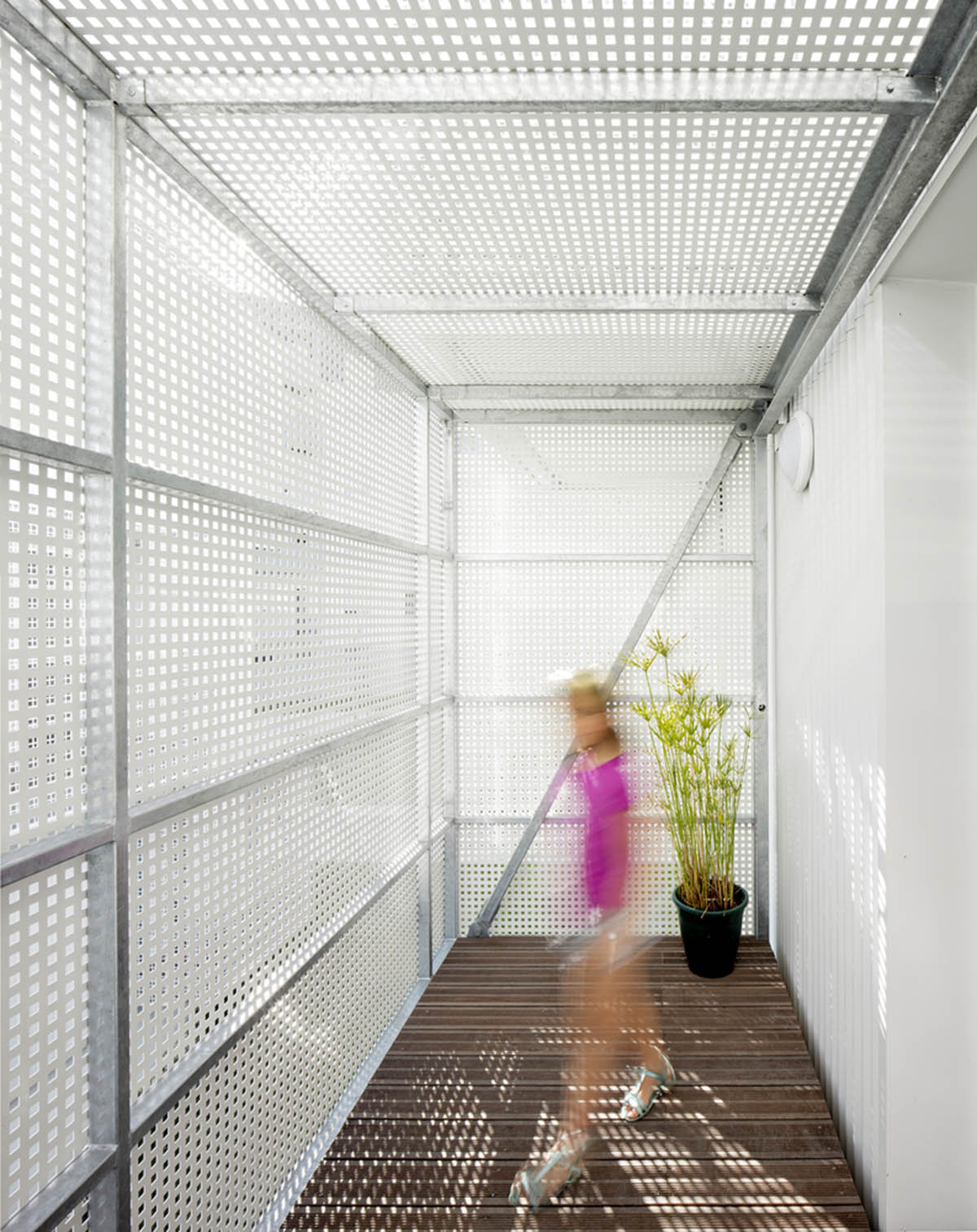
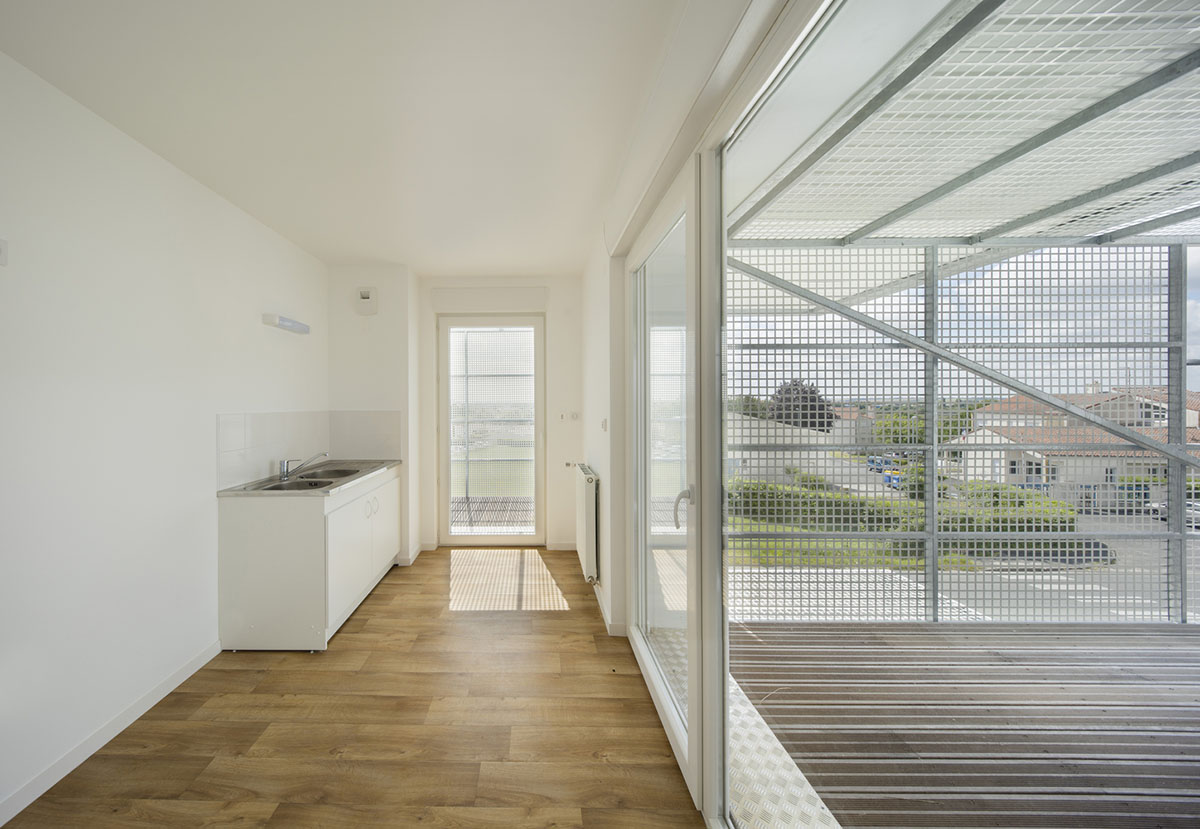







All photography © Javier Callejas Sevilla
> via More Architecture / Poggi Architecture
